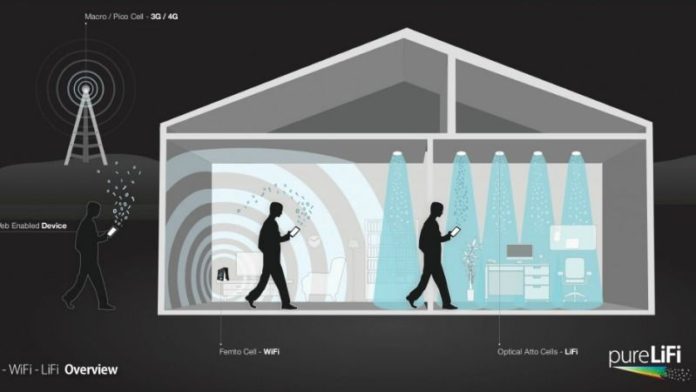Wi-Fi vs. Li-fi
Most people would never pass up the chance to use free wi-fi no matter where they come from. In the world of smartphones, tablets and social media even setting up wi-fi in the home to work or just surf the internet is something household now put on their budget. Trouble is, wi-fi networks can be notoriously slow and unreliable when everybody is trying to use them all at once. But, worry no more, because there is a new-age wi-fi on its way to hitting your market.
Light fidelity, li-fi for short, is a light-based wireless network. The first mentions of li-fi were around 2011 when investors such as Harald Haas toyed with the idea of using the almost imperceptible flickering of Light Emitting Diodes to transmit data. Their ideas were realized but the problem of slow wireless connections was unresolved. Over the years, lab tests developed li-fi from infrared rays that were able to transmit data at speeds of up to 224 GBps, and 1 GBps on a commercial scale. Now, scientists from the Eindhoven University of Technology may have coined a method of getting li-fi to transmit at 42.6 GBps commercially, more than a hundred times faster than the best wi-fi which runs at 300 Mbps.
The project that made this possible is called the BROWSE project. The research team in charge of BROWSE developed their li-fi model by utilizing light bulbs as network routers. One member of the group, doctorate student Joanne Oh, said that the network model of the team exploited light antennas to transmit data wirelessly. The BROWSE project li-fi model utilized antennas that served to direct rays from an optical fiber onto gratings that radiated multiple light rays at the same time to transmit the data. The gratings, the group of scientists added, were placed at different wavelengths and angles to ensure that there would be no interference during data transmission. Furthermore, the antennas were placed on the ceiling and the gratings on the ground in a manner that ensured data was bounced back and forth between the antenna and gratings, guaranteeing that the data remained within the range of the network. This is according to what the research team wrote in the Journal of Lightwave Technology and the IEEE Explore Journal.
Oh also hinted that the li-fi model the group created could be improved upon by adding onto the number of gratings per antenna. Adding those devices would ensure that there would be no overlap in wireless connection.
The Benefits
The li-fi technology that the BROWSE team came up with could mean no more buffing for you as you stream those songs or videos you like. The li-fi also improves the security and efficiency that you were once offered by your trusted wi-fi provider.
The Limitations
The greatest bane of li-fi technology is that it only works with the lights on so no more under-the-cover browsing for you. Wi-fi also trumps li-fi because you can only use li-fi in a room but not through any place with a wall in between. Finally, while the li-fi network may be present, the devices it works on have yet to be invented!




